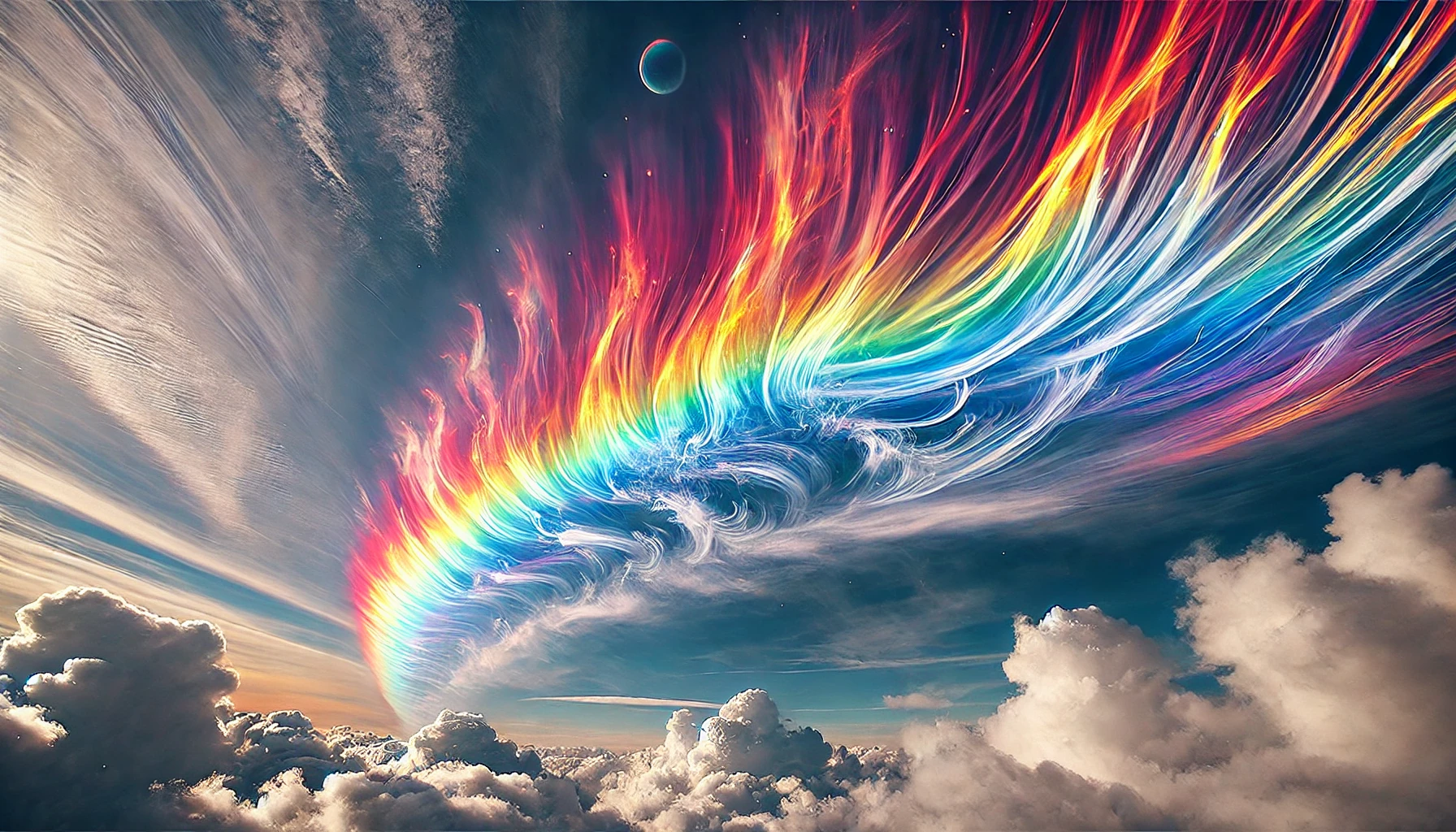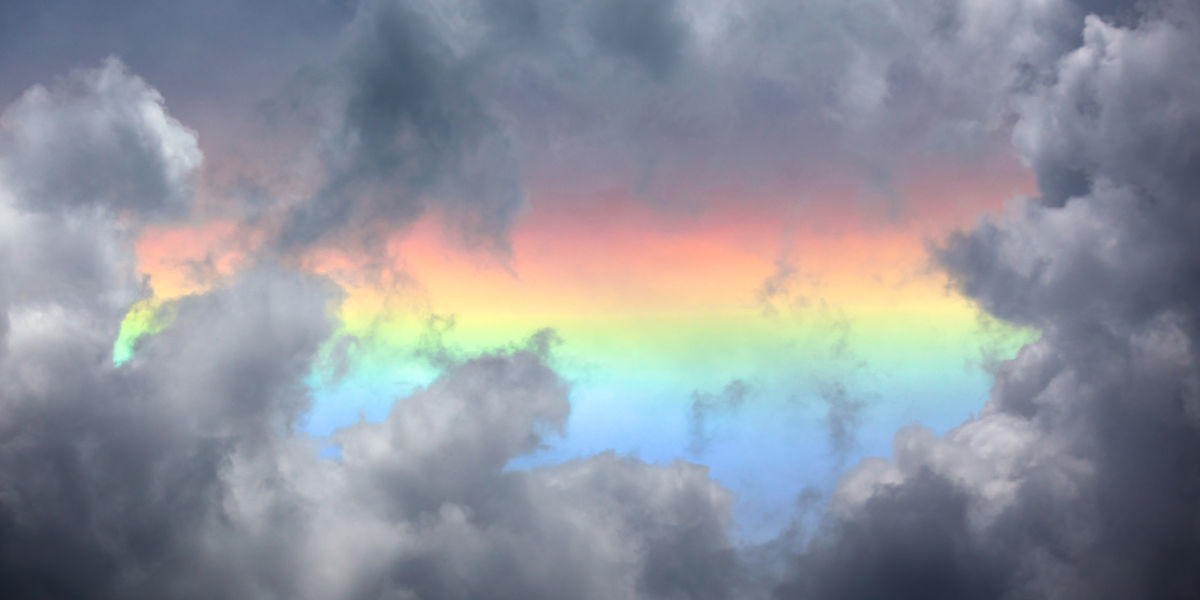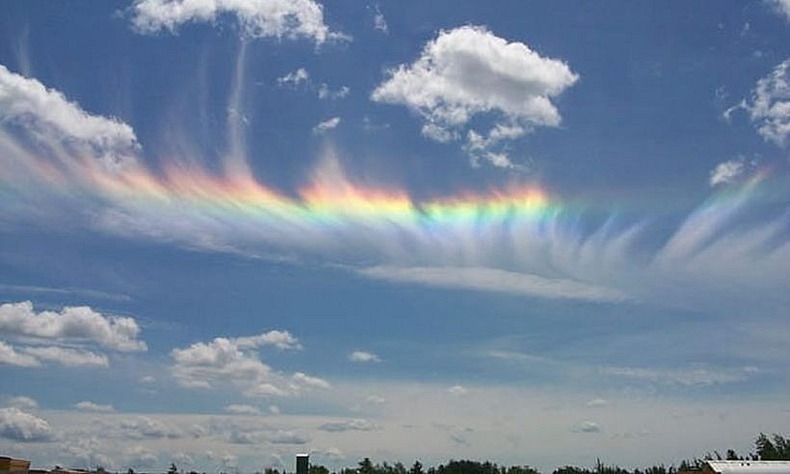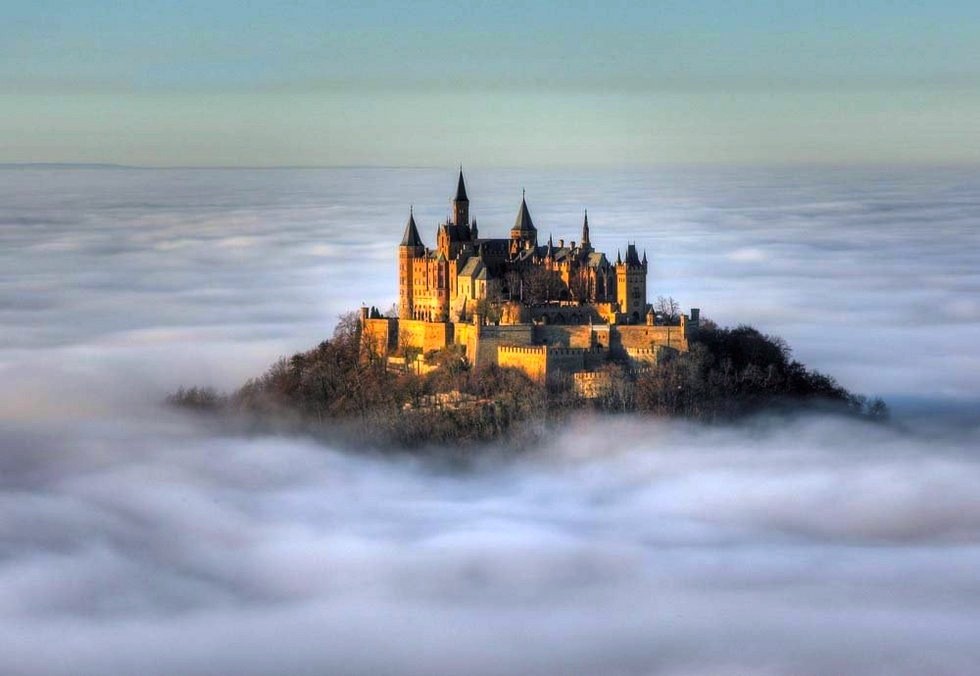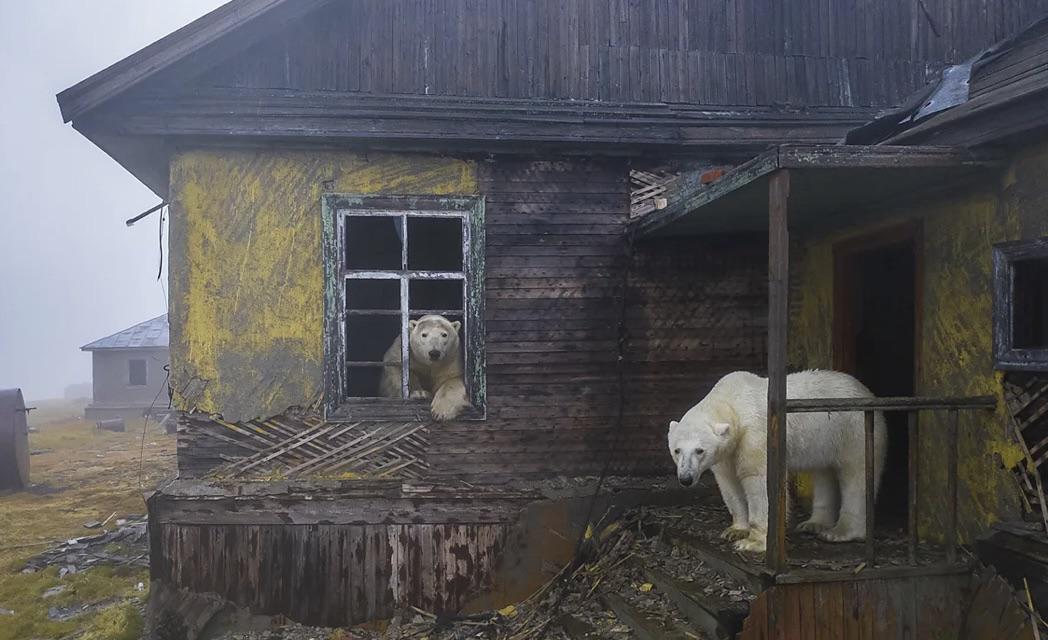Every now and then, the sky puts on a show that seems almost too magical to be real. One of the most breathtaking of these rare performances is something many people go their entire lives without seeing—a vivid, multicolored streak blazing across the sky like a horizontal flame. It’s known as a fire rainbow, but its true name is the circumhorizontal arc.
Despite the nickname, fire rainbows have nothing to do with fire, and they aren’t technically rainbows in the usual sense either. What they are, instead, is a stunning atmospheric phenomenon caused by sunlight, ice crystals, and the precise geometry of nature all coming together for a few perfect minutes.
A circumhorizontal arc forms when the sun is positioned high in the sky—at least 58 degrees above the horizon—and its light passes through the flat, hexagonal ice crystals found in cirrus clouds. These clouds float high above the Earth, thin and wispy, almost like brushstrokes across the blue.
As the light filters through the ice, it bends (or refracts) at exactly the right angle to separate into its component colors, like a prism. But instead of curving into an arc like a typical rainbow, the result is a horizontal ribbon of intense color—red, orange, yellow, green, blue, indigo, and violet—streaked across the sky as if someone painted it by hand.
The result? A surreal, fiery band of rainbow light that looks like it’s been set ablaze.
The conditions for a fire rainbow to appear are extremely specific, which is why they’re so rare and often go unnoticed. Not only does the sun need to be high in the sky (which usually happens only around midday in summer), but the cirrus clouds need to contain perfectly oriented ice crystals to reflect the light at just the right angles.
Even then, you have to be in the right place at the right time—eyes turned to the sky—to catch it. Many people who have been lucky enough to witness one say it’s over in just a few minutes. But the impact of seeing it? That tends to last much longer.
People who stumble upon a fire rainbow often describe the moment as something out of a dream. There’s no storm, no rain—just a vivid burst of color glowing in the stillness of the sky. It feels otherworldly, like nature has bent the rules for just a moment to show you what she’s capable of.
Photographers and sky watchers often scramble to capture these elusive phenomena, and when they do, the images look like something straight from a fantasy film. But what’s perhaps even more powerful is the fact that this beauty is entirely natural—no filters, no tricks, just sunlight and ice and the geometry of the heavens.
While fire rainbows may be rare, they are also a subtle reminder of how much wonder exists above us, often unnoticed. In a world that moves so fast, they invite us to look up, slow down, and witness something fleeting but unforgettable.
They also reflect something deeper about our planet—the delicate balance between light, air, and atmosphere that makes Earth not just habitable, but stunning.
So the next time you’re outside on a bright summer day, take a glance at the sky. If you see high, wispy clouds and feel the sun almost directly overhead, you might just be in the presence of a circumhorizontal arc. And if you are, consider yourself lucky—you’re watching one of nature’s rarest and most spectacular tricks of the light.
For a few moments, the sky becomes a canvas, and sunlight becomes paint. And in those moments, Earth feels just a little more magical.
